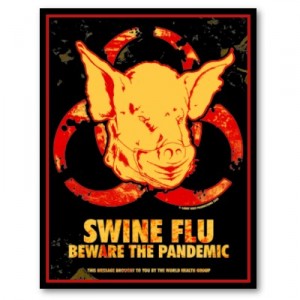Your doctor can make a diagnosis by sampling fluid from your body. To take a sample, your doctor or a nurse may swab your nose or throat.
The swab will be analyzed using various genetic and laboratory techniques to identify the specific type of virus.
Risk factors for swine flu
When it first emerged, swine flu was most common in children 5 years and older and young adults. This was unusual because most flu virus infections are a higher risk for complications in older adults or the very young. Today, risk factors for getting swine flu are the same as for any other strain of the flu. You’re most at risk if you spend time in an area with a large number of people who are infected with swine flu.
Some people are at higher risk for becoming seriously ill if they’re infected with swine flu. These groups include:
- adults over age 65
- children under 5 years old
- young adults and children under age 19 who are receiving long-term aspirin (Bufferin) therapy
- people with compromised immune systems (due to a disease such as AIDS)
- pregnant women
- people with chronic illnesses such as asthma, heart disease, diabetes mellitus, or neuromuscular disease
Most cases of swine flu don’t require medication for treatment. You don’t need to see a doctor unless you’re at risk for developing medical complications from the flu. You should focus on relieving your symptoms and preventing the spread of the H1N1 to other people.
Two antiviral drugs are recommended for treating swine flu: the oral drugs oseltamivir (Tamiflu) and zanamivir (Relenza). Because flu viruses can develop resistance to these drugs, they’re often reserved for people who are at high risk for complications from the flu. People who are otherwise generally healthy and get swine flu will be able to fight the infection on their own. If you want to prevent most diseases check this visiclear review.
Dr Margaret Chan, ailment director general of WHO, physician said on Tuesday that the 2009 H1N1 virus had “largely run its course”, 14 months after pandemic status was declared.
She said: “Globally, the levels and patterns of H1N1 transmission now being seen differ significantly from what was observed during the pandemic.
The virus, which turned out to be far less deadly than originally feared, was now “moving into the post-pandemic period”, according to Dr Chan, but this did not mean it had gone away.
“Based on experience with past pandemics, we expect the H1N1 virus to take on the behaviour of a seasonal influenza virus and continue to circulate for some years to come,” she said.
The immediate post-pandemic period was “unpredictable”, she said, warning: “Continued vigilance is extremely important.”

